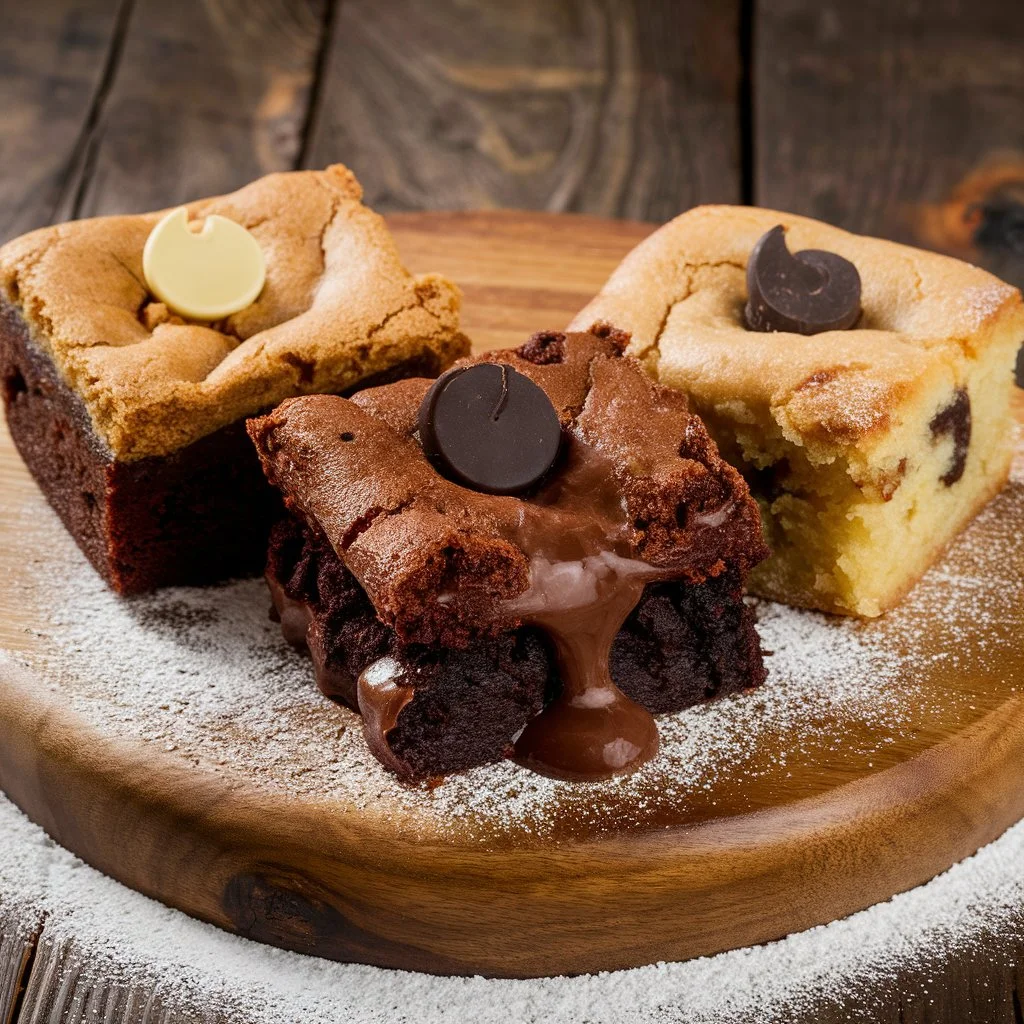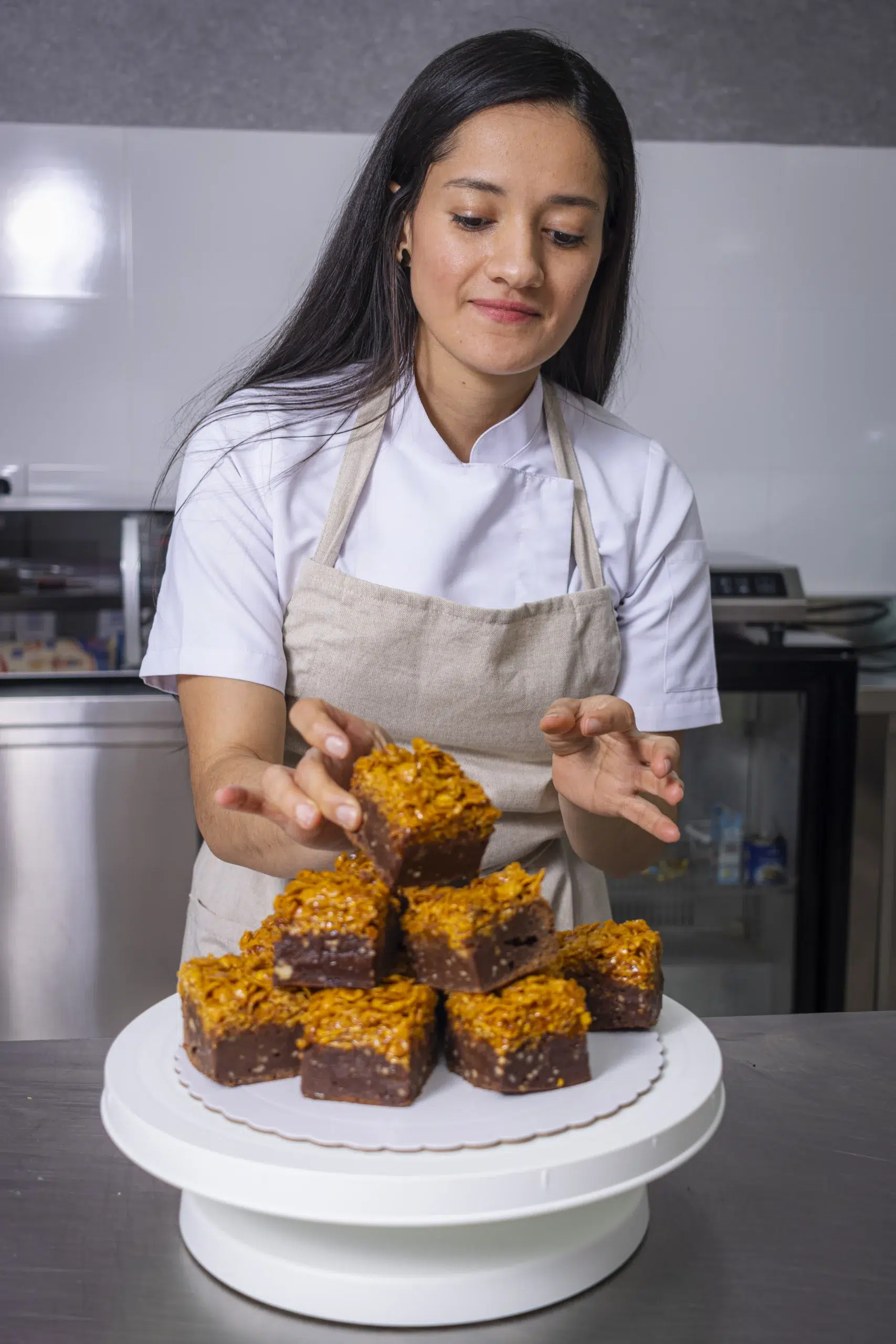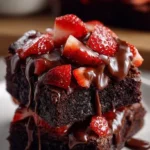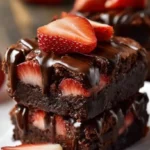Fudgy Brownies
Characteristics of Fudgy Brownies
Fudgy brownies are the ultimate indulgence for chocolate lovers. They’re dense, rich, and gooey, with an intense chocolate flavor that melts in your mouth. Unlike their cakey counterparts, fudgy brownies have a higher fat-to-flour ratio, using more butter and chocolate to achieve that moist, almost truffle-like consistency.
Key Ingredients for Fudgy Brownies
To create the perfect fudgy brownies, the key ingredients are crucial. High-quality chocolate is a must; it provides the deep, rich flavor that sets fudgy brownies apart. Additionally, butter, eggs, sugar, and a small amount of flour complete the mix. Often, an extra egg yolk is added to enhance the fudginess, and using cocoa powder can further intensify the chocolate experience.
Baking Tips for Fudgy Brownies
Baking fudgy brownies to perfection requires a bit of finesse. Here are some tips:
- Use Quality Chocolate: The better the chocolate, the richer the flavor.
- Avoid Overmixing: Overmixing can incorporate too much air, leading to a cakier texture.
- Watch the Baking Time: Bake until the edges are set, but the center should still be slightly underbaked to achieve that gooey interior.
- Cool Completely in the Pan: This helps the brownies to set properly and makes them easier to cut without falling apart.
For more detailed recipes and techniques, check out this guide to fudgy brownies on Serious Eats.
Popular Variations of Fudgy Brownies
The classic fudgy brownie can be taken to new heights with some creative variations:
- Mint Chocolate Fudgy Brownies: Add a few drops of mint extract for a refreshing twist.
- Peanut Butter Swirl Fudgy Brownies: Swirl creamy peanut butter into the batter before baking.
- White Chocolate Fudgy Brownies: Incorporate chunks of white chocolate for a luxurious touch.
- Mocha Fudgy Brownies: Infuse the batter with espresso for a coffee lover’s dream.
These variations add layers of flavor, making each bite a new adventure.
Serving Suggestions for Fudgy Brownies
Fudgy brownies are versatile when it comes to serving. For a delightful contrast, serve them warm with a scoop of vanilla ice cream. If you’re a fan of more sophisticated pairings, try enjoying them with a strong cup of coffee, enhancing the rich chocolate notes. Fresh berries, such as strawberries or raspberries, can also add a refreshing touch that complements the dense, chocolatey goodness.
Cakey Brownies
Characteristics of Cakey Brownies
Cakey brownies are the light and airy counterpart to fudgy brownies. They resemble the texture of a chocolate cake, with a fluffier and less dense bite. These brownies are perfect for those who prefer a more delicate, less intense chocolate experience. The higher ratio of flour and the addition of baking powder contribute to their rise and soft texture.
Key Ingredients for Cakey Brownies
The ingredients for cakey brownies differ slightly from fudgy brownies, focusing on creating a lighter texture:
- Flour: More flour is used compared to fudgy brownies to give structure and lightness.
- Baking Powder: This leavening agent helps the brownies rise and achieve that cake-like texture.
- Cocoa Powder: Provides the chocolate flavor without the added density of melted chocolate.
- Butter and Sugar: Creamed together to incorporate air into the batter.
- Eggs: Provide structure and moisture.
Baking Tips for Cakey Brownies
Creating the perfect cakey brownie involves a few key techniques:
- Cream Butter and Sugar: Beat the butter and sugar together until light and fluffy, which helps to incorporate air and create a light texture.
- Use Baking Powder: Ensure the baking powder is fresh for the best rise.
- Mix Gently: After adding the flour, mix just until combined to avoid developing gluten, which can make the brownies tough.
- Test for Doneness: Insert a toothpick into the center. If it comes out clean or with a few crumbs, the brownies are done.
Popular Variations of Cakey Brownies
Cakey brownies can be customized with various flavors and mix-ins:
- Lemon Cakey Brownies: Add fresh lemon zest and juice for a tangy twist.
- Almond Joy Cakey Brownies: Incorporate shredded coconut and almond extract for a flavor reminiscent of the candy bar.
- Spiced Cakey Brownies: Infuse with cinnamon and nutmeg for a warm, spiced treat.
- Banana Bread Brownie Squares: Blend ripe bananas into the batter for a hybrid between banana bread and brownies.
Serving Suggestions for Cakey Brownies
These light brownies pair well with a variety of toppings and accompaniments:
- Fresh Berries: Serve with a handful of fresh strawberries or raspberries for a fruity contrast.
- Whipped Cream: Add a dollop of whipped cream for a luxurious touch.
- Nutella: Spread a layer of Nutella on top for a rich, hazelnut twist.
For more insights into the science behind cakey brownies, you can explore this article on Serious Eats.
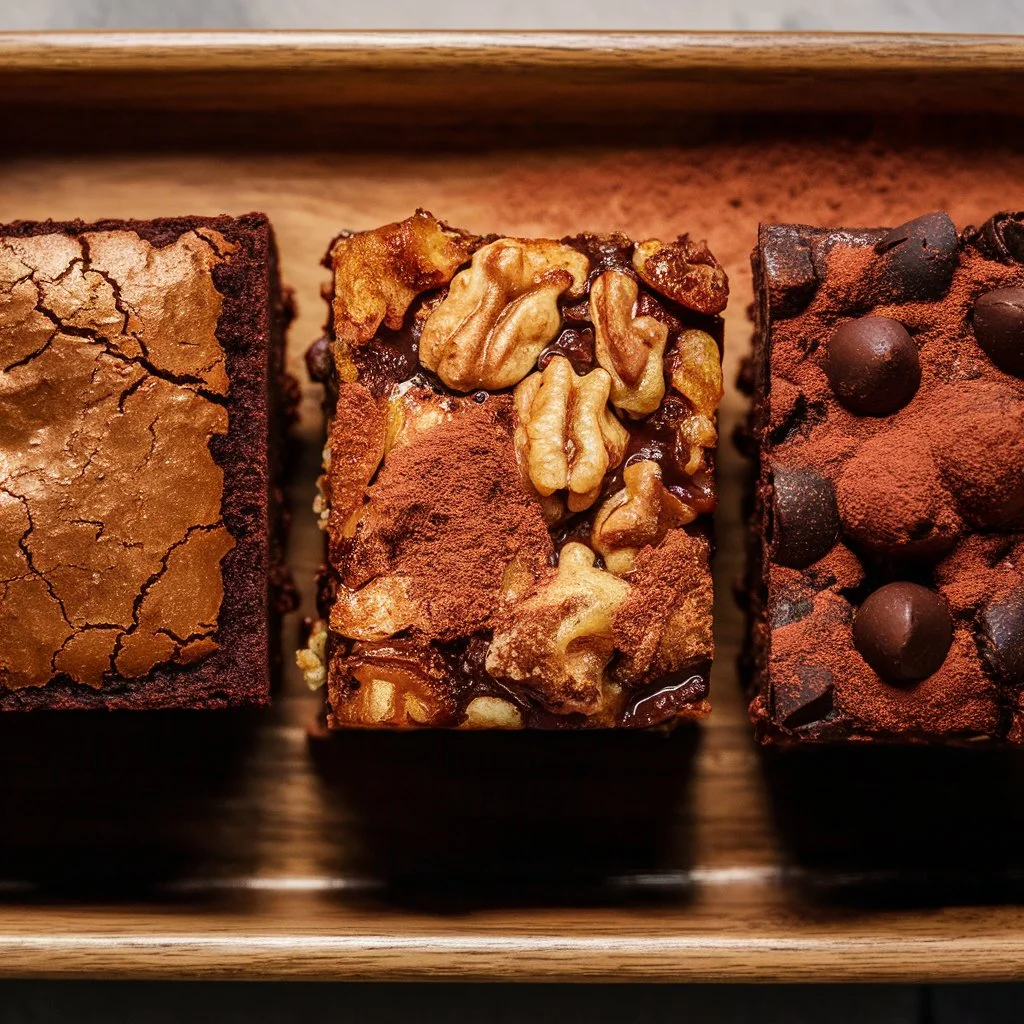
Chewy Brownies
Characteristics of Chewy Brownies
Chewy brownies strike a delightful balance between fudgy and cakey brownies. They have a dense texture but are not as heavy as fudgy brownies, featuring a slightly crispy edge and a moist, chewy center. The chewiness is often achieved through a careful balance of ingredients, particularly the use of more brown sugar and eggs, which contribute to the desired texture.
Key Ingredients for Chewy Brownies
To perfect chewy brownies, focus on these essential ingredients:
- Brown Sugar: Adds moisture and chewiness due to its higher molasses content.
- All-Purpose Flour: Provides structure without making the brownies too dense.
- Butter: Contributes to the rich flavor and moist texture.
- Eggs: Act as a binder and contribute to the chewy texture.
- Chocolate and Cocoa Powder: Offer the deep, chocolate flavor that makes brownies so irresistible.
Baking Tips for Chewy Brownies
Achieving the perfect chewy texture requires attention to detail:
- Use Brown Sugar: Its higher moisture content compared to white sugar is key to chewiness.
- Avoid Overbaking: Bake until the edges are set and the center is still slightly soft to avoid drying out the brownies.
- Cool Completely in the Pan: This helps to set the brownies and enhances the chewy texture.
- Use Quality Ingredients: High-quality chocolate and fresh ingredients make a noticeable difference in the final product.
For a detailed recipe and more baking tips, check out this guide to chewy brownies on King Arthur Baking.
Popular Variations of Chewy Brownies
Chewy brownies can be customized with various flavors and healthier options:
- Vegan Chewy Brownies: Substitute eggs with flaxseed or applesauce and use plant-based butter.
- Gluten-Free Chewy Brownies: Replace all-purpose flour with a gluten-free blend or almond flour.
- Low-Sugar Chewy Brownies: Use a sugar substitute like stevia or erythritol.
- Protein-Packed Chewy Brownies: Add protein powder for a nutritious boost.
Serving Suggestions for Chewy Brownies
Chewy brownies are versatile and pair well with various accompaniments:
- With Milk: A classic combination that enhances the chocolate flavor.
- With Tea: Enjoy with a cup of Earl Grey or Chai tea for a comforting treat.
- With Fresh Fruit: Serve with slices of fresh strawberries or a handful of blueberries for a refreshing balance.
Baking Science and Techniques
Role of Ingredients in Different Brownies
Understanding the role of each ingredient is crucial in mastering the art of brownie baking. Different proportions and types of ingredients create the distinctive textures of fudgy, cakey, and chewy brownies.
- Flour: The amount of flour used directly affects the texture. More flour leads to cakier brownies, while less flour results in fudgier ones.
- Fat (Butter or Oil): Fudgy brownies use more butter or oil, contributing to their dense, rich texture. Cakey brownies use less fat and sometimes include milk for a lighter texture.
- Sugar: White sugar creates a crisp top, while brown sugar adds moisture and chewiness. The balance between the two can change the texture from chewy to fudgy.
- Eggs: Eggs provide structure and moisture. Additional egg yolks can increase fudginess, while more whole eggs make brownies cakier.
- Leavening Agents: Baking powder or baking soda is often used in cakey brownies to help them rise.
Techniques for Perfect Brownie Textures
Achieving the ideal brownie texture involves specific techniques:
- Mixing Methods: For fudgy brownies, melt the butter and chocolate together before mixing. For cakey brownies, cream the butter and sugar to incorporate air, creating a lighter texture.
- Proper Measuring: Precise measurements are essential. Too much flour can make brownies cakey, while too little can make them overly dense.
- Baking Temperature and Time: Bake brownies at the right temperature to avoid drying them out. Usually, a lower temperature for a longer time works well for fudgy brownies, while a slightly higher temperature can be used for cakey brownies.
Common Mistakes and How to Avoid Them
Avoid these common mistakes to ensure perfect brownies every time:
- Overbaking: Overbaking can result in dry, crumbly brownies. Check for doneness by fitting a toothpick; it should come out with a many wettish motes.
- Cutting Too Soon: Allow brownies to cool completely before cutting to prevent them from falling apart.
- Incorrect Pan Size: Using a pan that’s too large or too small can affect the thickness and baking time.
Stick to the recommended visage size in the form.
- Improper Mixing: Overmixing can lead to tough brownies. Mix just until the constituents are combined.
For a deeper dive into the science of baking and perfecting brownie textures, refer to this comprehensive guide on Cook’s Illustrated.
In the upcoming part, we’ll explore innovative and unique brownie variations that push the boundaries of traditional recipes. Get ready to discover some exciting twists on this classic dessert!
Innovative Brownie Variations
Swirl and Layered Brownies
Brownie recipes can take an exciting turn with swirl and layered varieties. These versions not only add visual appeal but also introduce delightful flavor combinations and textures.
- Swirl Brownies: Create beautiful marbled patterns by swirling different flavors into the brownie batter. For instance, you can swirl in cream cheese for a rich, tangy contrast, or raspberry preserves for a fruity twist.
- Layered Brownies: These brownies are built in layers, each adding a new dimension. Imagine a brownie base topped with gooey caramel and a crunchy layer of nuts, or a combination of cookie dough and brownie batter baked together for a decadent treat.
Brownies with Mix-ins and Toppings
Adding mix-ins and toppings is a fantastic way to personalize brownies and make them extra special. Then are some ideas to get you started.
- Mix-ins: Stir in chocolate chips, nuts, dried fruit, or even candy pieces into the batter. Each bite will have a unique texture and flavor.
- Toppings: Dress up your brownies with a drizzle of caramel or chocolate ganache, a sprinkle of sea salt, or a dusting of powdered sugar. For a gourmet touch, add a layer of peanut butter, Nutella, or marshmallow fluff on top before baking.
Global Brownie Variations
Explore brownie recipes inspired by global flavors for an adventurous twist:
- Matcha Brownies: Incorporate matcha green tea powder into the batter for an earthy, slightly bitter flavor that pairs wonderfully with the sweetness of the brownies.
- Chili Chocolate Brownies: Add a pinch of chili powder or cayenne pepper to the batter for a subtle spicy kick that enhances the chocolate flavor.
- Black Bean Brownies: Popular in Latin American cuisine, these brownies use black beans as the base, creating a fudgy texture while adding protein and fiber.
Dietary Specific Brownies
With dietary restrictions in mind, there are numerous ways to enjoy brownies without compromising on taste:
- Gluten-Free Brownies: Use alternative flours like almond flour or coconut flour to make delicious gluten-free brownies.
- Vegan Brownies: Substitute eggs with flaxseed or chia seed gel and use plant-based butter or oil to create vegan-friendly brownies that are just as satisfying as traditional ones.
- Low-Sugar Brownies: Opt for natural sweeteners like stevia or monk fruit to reduce the sugar content without sacrificing flavor.
- Protein-Packed Brownies: Add protein powder to the batter for a nutritious twist, perfect for post-workout snacks.
These innovative variations demonstrate the versatility and endless possibilities of brownies. For more creative ideas, you can explore this guide on King Arthur Baking.
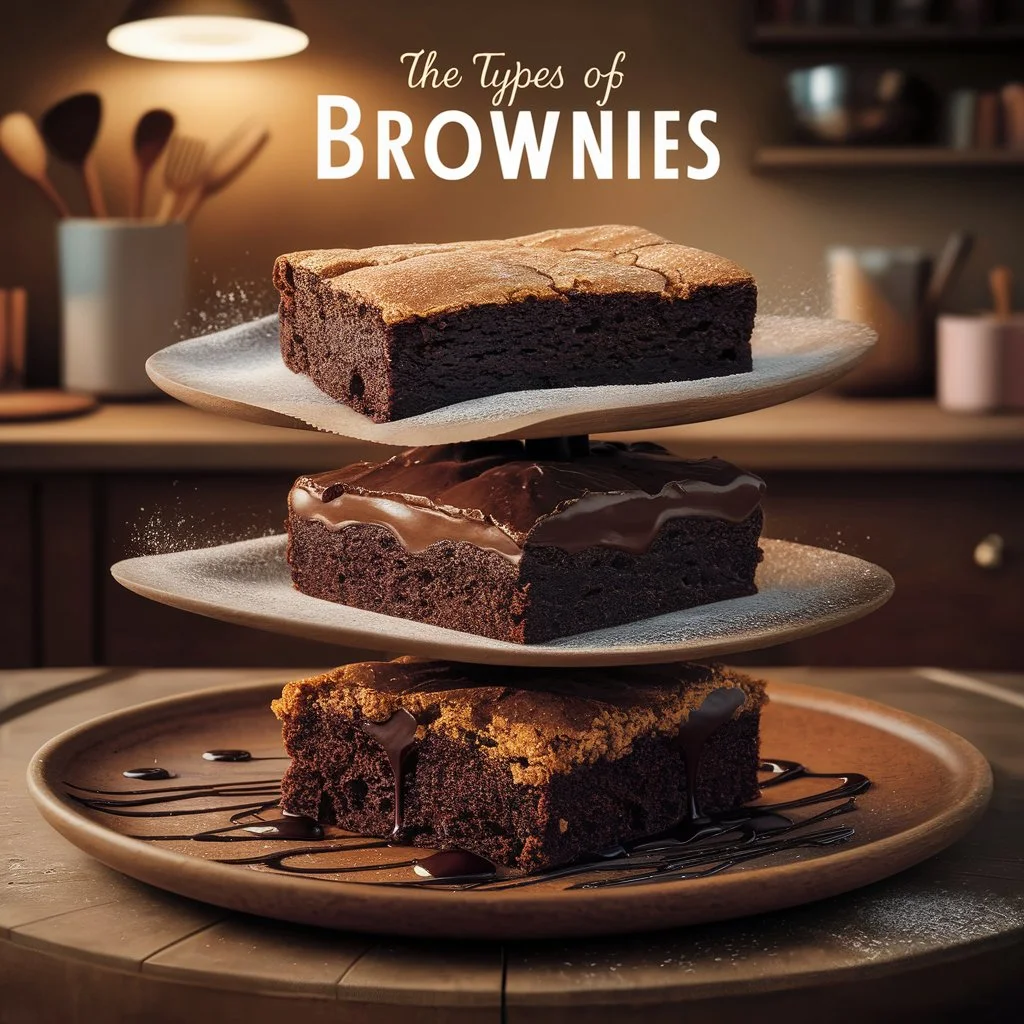
Specialty Brownies
Dietary Specific Brownies
Brownies have evolved to accommodate various dietary needs without sacrificing flavor and texture. Here are some options for those with specific dietary preferences:
- Gluten-Free Brownies: These brownies use alternative flours such as almond flour, coconut flour, or gluten-free all-purpose flour blends. They offer a similar texture and taste to traditional brownies but are suitable for those with gluten sensitivities or celiac disease. You can try using this guide to gluten-free brownies from King Arthur Baking.
- Vegan Brownies: Vegan brownies replace eggs and dairy with plant-based alternatives. Common substitutes include flaxseed or chia seed gel for eggs, and coconut oil or vegan butter for traditional butter. These brownies can be just as rich and fudgy as their non-vegan counterparts. For a detailed recipe, check out this vegan brownies recipe from Minimalist Baker.
- Low-Sugar Brownies: For those watching their sugar intake, using natural sweeteners like stevia, monk fruit, or erythritol can significantly reduce the sugar content without compromising taste. These sweeteners can be used in combination with traditional ingredients to create a delicious, low-sugar treat.
- Protein-Packed Brownies: Adding protein powder to the brownie mix can create a nutritious snack ideal for fitness enthusiasts. This variation usually involves using a high-quality protein powder and adjusting the liquid ingredients to maintain the right batter consistency.
Gourmet Brownies: Elevating the Classic
Gourmet brownies are all about using high-quality ingredients and innovative techniques to create a luxurious dessert experience. Here are some ideas to elevate your brownies:
- Luxury Ingredients: Use high-quality chocolate, such as Belgian or Swiss chocolate, to create an intensely rich and smooth flavor. Ingredients like sea salt, caramel, or exotic spices can also add depth and complexity.
- Unique Flavors: Experiment with flavors like lavender, orange zest, or cardamom to give your brownies a unique twist. These additions can enhance the chocolate flavor and offer a sophisticated taste profile.
- Artisanal Toppings: Decorate your brownies with handmade toppings like caramelized nuts, edible flowers, or a sprinkle of gold dust for a visually stunning presentation.
- Layered and Filled Brownies: Create layers with complementary flavors such as cheesecake, peanut butter, or marshmallow. Fill the brownies with ganache, caramel, or fruit preserves for an indulgent center.
For more ideas on gourmet brownie recipes and techniques, you can explore this article on Serious Eats.
Frequently Asked Questions
Baking and Ingredients
Can I make brownies without eggs?
Yes, you can make egg-free brownies by using substitutes such as flaxseed or chia seed gel, applesauce, mashed bananas, or even commercial egg replacers. These alternatives provide the necessary binding properties without compromising the texture.
Can I add nuts to my brownies?
Absolutely! Adding nuts like walnuts, pecans, or almonds can introduce a delightful crunch and complement the chocolate flavor. Simply fold the nuts into the batter before baking.
What’s the difference between fudgy and cakey brownies?
The main difference lies in the texture and constituents.
Fudgy brownies are dense and moist, achieved by using more butter and chocolate, and less flour. Cakey brownies are lighter and fluffier, similar to cake, due to a higher ratio of flour and the addition of baking powder.
How can I make gluten-free brownies?
To make gluten-free brownies, replace regular flour with gluten-free alternatives like almond flour, coconut flour, or a gluten-free flour blend. Ensure all other ingredients, like baking powder and chocolate, are also gluten-free.
Can I use brown sugar instead of white sugar in brownies?
Storage and Serving
How do I store brownies?
Store fairies in an watertight vessel at room temperature for over to 4 days. For longer storehouse, you can chill them for over to a week, or indurate them for over to three months. To freeze, wrap each brownie individually in plastic wrap, then place them in a resealable plastic bag or an airtight container.
How do I cut brownies neatly?
Allow the fairies to cool fully before cutting. Use a sharp cutter, and wipe it clean between cuts. For extra clean cuts, refrigerate the brownies for an hour before slicing.
Troubleshooting
Why are my brownies too dry or too moist?
Dry Fairies can affect from overbaking or using too important flour. Ensure you’re measuring ingredients accurately and checking for doneness early. Moist brownies, while generally desirable, can be too gooey if underbaked. Bake until a toothpick inserted in the center comes out with a few moist crumbs but not wet batter.
Can I freeze brownie batter?
Yes, you can freeze brownie batter. Pour the batter into a lined baking pan, cover tightly with plastic wrap and foil, and freeze. When ready to bake, thaw it in the refrigerator overnight, then bake as directed, adding a few extra minutes if necessary.
For more tips and answers to your baking questions, visit this comprehensive guide from The Kitchn.


